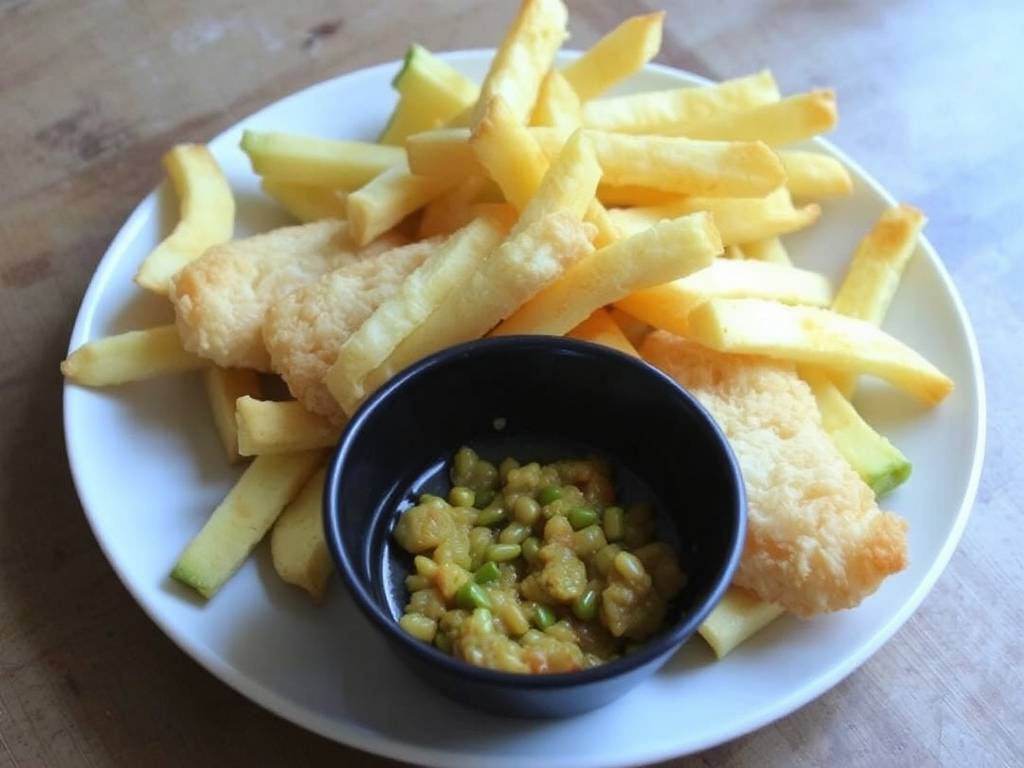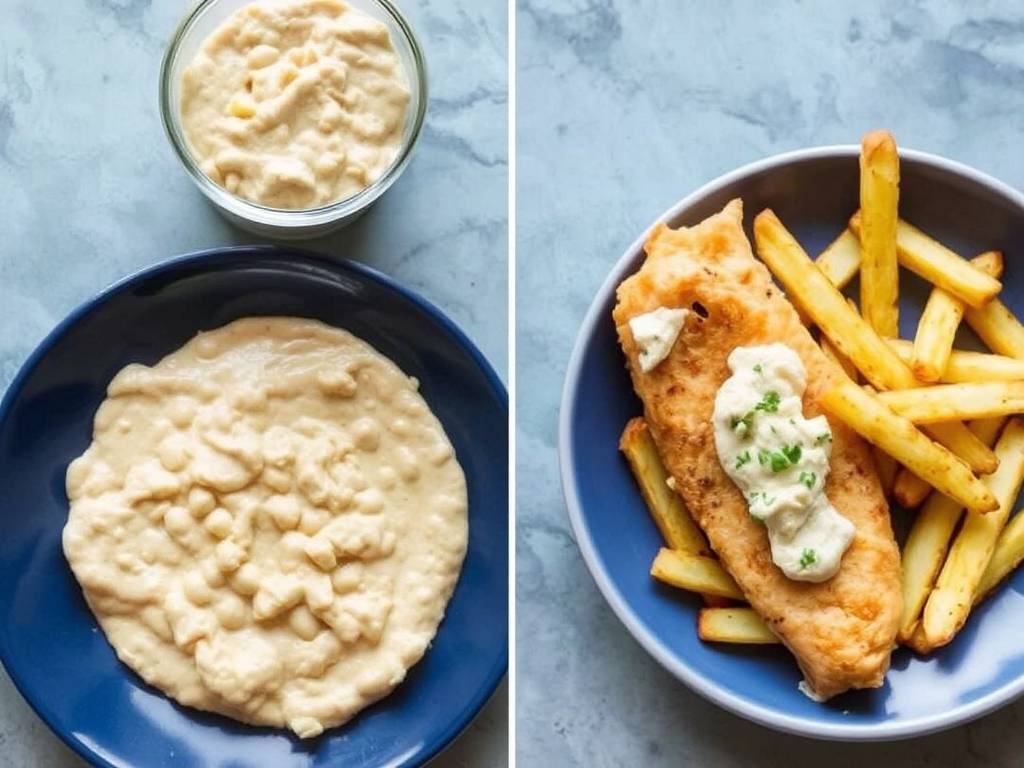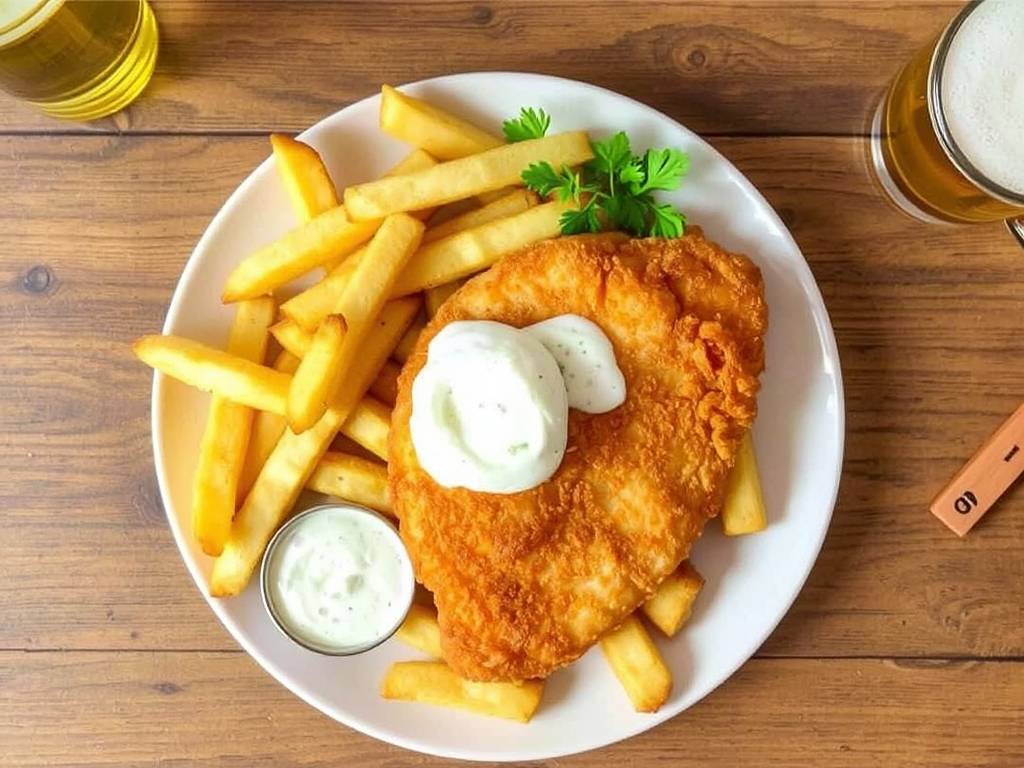The Ultimate Guide to Making Perfect British Fish and Chips with Homemade Tartar Sauce
There's something magical about that first bite of golden, crispy fish and chips, especially when you've made it yourself. The satisfying crunch giving way to flaky white fish, paired with those irresistible chips and tangy homemade tartar sauce - it's comfort food at its finest. Many people think creating this British classic at home requires professional equipment, but I'm here to show you how to achieve fish and chips perfection right in your own kitchen.
Let's start with what makes this combination so special. The contrast between the crispy batter and tender fish, the salty chips with that fluffy interior, and the creamy tartar sauce cutting through the richness - it's a symphony of textures and flavors that's stood the test of time. The best part? You can control the quality of ingredients, ensuring your homemade fish and chips are both delicious and made with love.

Choosing Your Fish: The Foundation of Great Fish and Chips
The traditional choice for authentic British fish and chips is cod or haddock. Both have firm, white flesh that holds up well to frying and offers that classic mild flavor. Look for thick, center-cut fillets about 1-1.5 inches thick - this ensures your fish cooks evenly without drying out. If you can't find these, other excellent options include pollock, hake, or halibut. Fresh fish should have a clean, ocean-like scent and firm, springy flesh. Frozen fish works perfectly well too - just make sure to thaw it completely in the refrigerator overnight and pat it thoroughly dry with paper towels before battering.
The secret to preventing soggy batter starts with dry fish. After patting your fillets dry, you can take an extra step by lightly dusting them with flour before dipping in batter. This creates a barrier that helps the batter adhere better and creates that super-crispy texture we all love.
Crafting the Perfect Beer Batter
The batter is what transforms simple fish into that iconic crispy coating. My go-to beer batter recipe combines simplicity with incredible results. The carbonation in beer creates thousands of tiny bubbles that expand when they hit the hot oil, giving you that light, airy, and incredibly crisp texture.
You'll need:
- 1 cup all-purpose flour
- 1/4 cup cornstarch
- 1 teaspoon baking powder
- 1 teaspoon salt
- 1/2 teaspoon black pepper
- 1 cup cold lager-style beer
- 1 tablespoon vinegar (white wine or malt)
Whisk the dry ingredients together in a medium bowl. Create a well in the center and gradually pour in the cold beer and vinegar, whisking until just combined. Don't overmix - a few lumps are perfectly fine. Overmixing develops gluten, which can make your batter tough rather than light and crispy. Keep the batter chilled until ready to use - cold batter hitting hot oil creates the best reaction for that perfect crispness.
The choice of beer matters more than you might think. A light lager or pale ale works beautifully, providing flavor without overpowering the fish. The alcohol in beer evaporates quickly during frying, leaving behind that distinctive flavor and helping create a lighter texture than you'd get with water or other liquids.
Mastering the Art of Perfect Chips
Let's talk about those chips - because let's be honest, they're just as important as the fish. The secret to perfect chips lies in the double-fry method, which gives you that crispy exterior and fluffy interior that makes proper chips so irresistible.
Start with the right potatoes. Russet or Maris Piper potatoes are ideal because of their high starch content and low moisture. Peel and cut them into chips about 1/2 inch thick. Soak them in cold water for at least 30 minutes - this removes excess starch and prevents them from sticking together during frying.
Now for the double-fry technique: First, drain and thoroughly dry your chips. Heat your oil to 300°F (150°C) and fry the chips in batches for about 5-7 minutes until cooked through but not colored. Remove and drain on a wire rack. This first fry cooks the potato through.
When you're almost ready to serve, increase the oil temperature to 375°F (190°C) and fry the chips again for 2-3 minutes until golden brown and crispy. This second fry at higher temperature creates that beautiful color and crunchy exterior. Season immediately with salt after removing from the oil.
Creating Your Homemade Tartar Sauce

Store-bought tartar sauce simply can't compare to what you can make at home in just five minutes. This tangy, creamy condiment is the perfect accompaniment to cut through the richness of fried fish.
My favorite homemade tartar sauce recipe combines:
- 1 cup good quality mayonnaise
- 2 tablespoons sweet pickle relish
- 1 tablespoon freshly squeezed lemon juice
- 1 tablespoon finely chopped capers
- 1 tablespoon finely chopped fresh parsley
- 1 teaspoon Dijon mustard
- 1 teaspoon finely minced shallot
- 1/2 teaspoon Worcestershire sauce
Simply combine all ingredients in a small bowl and mix well. For best flavor, cover and refrigerate for at least 30 minutes before serving to allow the flavors to meld together. The beauty of this recipe is its flexibility - feel free to adjust the ingredients to your taste. Some people love adding chopped hard-boiled eggs, while others prefer a touch of hot sauce for some heat.
The Frying Process: Safety and Technique
Proper frying technique is crucial for both safety and achieving that perfect golden result. Choose a large, heavy-bottomed pot or Dutch oven - the heavy base helps maintain consistent temperature. Fill no more than one-third full with a high smoke point oil like vegetable, canola, or peanut oil.
Use a deep-fry thermometer to monitor your oil temperature carefully. Maintaining the right temperature (around 375°F/190°C) is essential - too low and your food will be greasy, too high and it will burn before cooking through. Don't overcrowd the pan - fry in batches to prevent the temperature from dropping dramatically.
When lowering fish into the oil, hold it by one end and gently lay it away from you to prevent splashing. Fry for 6-8 minutes, turning occasionally, until the batter is golden brown and crisp. The fish should float to the surface when done. Remove with a slotted spoon or spider strainer and drain on a wire rack set over a baking sheet - this keeps everything crispy by allowing air to circulate.
Serving Your Masterpiece
Presentation matters! Serve your fish and chips immediately on pre-warmed plates. Traditionalists might use newspaper for that authentic touch (use parchment paper between the food and newspaper for food safety), but any large platter works beautifully. Accompany with lemon wedges, your homemade tartar sauce, and perhaps some mushy peas if you're feeling particularly British.
For the complete experience, consider serving with a cold beer or a pot of hot, strong tea. The acidity in both helps cut through the richness of the fried food, cleansing your palate between those delicious bites.
Troubleshooting Common Issues
Even experienced cooks can encounter challenges when making fish and chips. If your batter isn't crispy, your oil temperature might be too low, or your fish might not have been dry enough before battering. Soggy batter can also result from overcrowding the pan, which lowers the oil temperature.
If your chips are too dark outside but raw inside, your oil temperature is likely too high. Remember the double-fry method ensures perfectly cooked chips every time. If your tartar sauce seems too thick, simply thin it with a little more lemon juice or a teaspoon of water.
For those looking for healthier alternatives, you can bake both the fish and chips. For the fish, spray the battered fillets with cooking spray and bake at 425°F (220°C) for 15-20 minutes. For the chips, toss in a little oil and bake at 400°F (200°C) for 25-30 minutes, turning halfway. While not exactly the same as deep-fried, these methods still deliver delicious results.
The joy of creating this classic dish at home goes beyond just the eating. There's something deeply satisfying about mastering each component and bringing them together into a meal that's guaranteed to bring smiles to everyone at your table. The techniques might seem detailed, but once you've made fish and chips a couple of times, it becomes second nature. So roll up your sleeves, heat up that oil, and get ready to create some fried food magic. Your perfect plate of fish and chips with homemade tartar sauce awaits!






发表评论